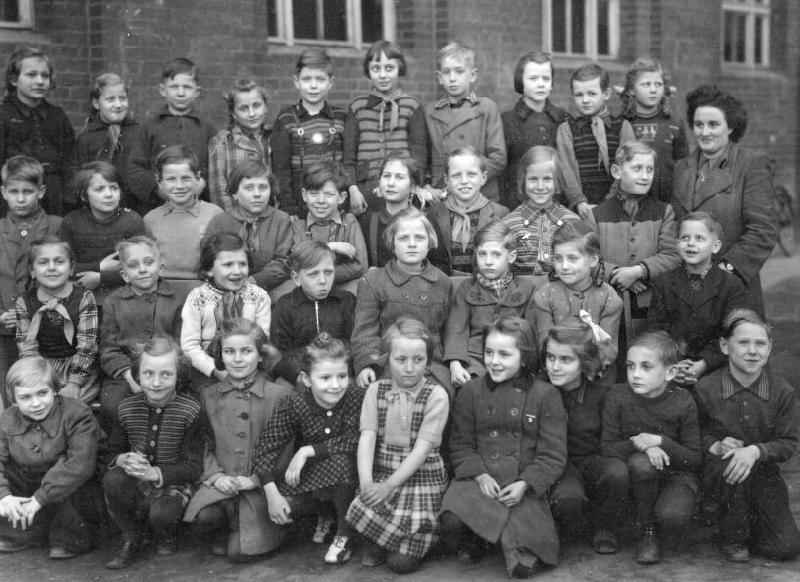
Figure 1.--Here we see a primary school class in East Germany during 1953. The children look about 7-8 years old. Note the Pioneer scarves that some of the children are wearing. |

|
We do not immediately see differences between schoolwear in East and West Germany after the end of World War II and the beginning of the occupation. Nor do we have a lot of information on DDR schoolwear. The German Democratic Republic (DDR) did not immediately institute school uniforms. It is often difficult to destinguish between East and West German photographs when the images are unidentified. One indicator when uniforms are not worn is the red Young Pioneer scarves the students in the DDR wore. German school children had never worn uniforms before. This is interesting as the model for the DDR was the USSR, and Soviet children did have to wear school uniforms. Soviet proconsuls controlled every aspect of German life. The lack of school uniforms in the DDR probably reflects the deep-seated rejection of German militarism and ideas (such as uniforms) associated with it. Eventually school uniforms were adopted, but I am not sure precisely when, apparently, about 1960. This was of course one more step in accepting the Soviet model in economoc and social areas. School uniforms were a well-established aspect of Soviet education.
We are not sure how common the uniforms were. One source tells us that the children only wore their Pioneer uniforms to school on special days. We have not yet been able to confirm this. While we have little information on East German schools at this time, some East German films had school scenes. A good example is the Der Untergang de Emma (1974). As occurred in Soviet films, the children in East German films often wore their own clothes rather than costumes. The children depicted here were not wearing school uniforms. Hopefully our German readers will provide some insights into East German school trends.
We do not immediately see differences between schoolwear in East and West Germany after the end of World War II and the beginning of the occupation. The children continued wearing their regular clothes. This at first was the same as worn in the Western occupation areas. This gradually changed as the German Economic Miracle tool hold. West Germans with much higherr discretional income were able to spend much more on fashionable clothing. Thus West German boys had much larger wardrobes of more fashionable and higher quality clothing. There seems to have been some similarity in styling even as East Germany took more anod more steps to separate the two Germanies ecomomically and culturally, symolized by the Berlin Wall and extension to the East-West German border. East Germans could, however, receive West German TV and radio and there was of course no language problem. Thus fashions trends in the West tended to flow over the Iron Curtain, especially into East Germany. This is an interesting dynamic to follow as we acquire moew East German school images.
The German Democratic Republic (DDR) did not immediately institute school uniforms. It is often difficult to destinguish between East and West German photographs when the images are unidentified. One indicator when uniforms are not worn is the red Young Pioneer scarves the students in the DDR wore. German school children had never worn uniforms before. This is interesting as the model for the DDR was the USSR, and Soviet children did have to wear school uniforms. Soviet proconsuls controlled every aspect of German life. The lack of school uniforms in the DDR probably reflects the deep-seated rejection of German militarism and ideas (such as uniforms) associated with it. Eventually school uniforms were adopted, but I am not sure precisely when, apparently, about 1960. This was of course one more step in accepting the Soviet model in economoc and social areas. School uniforms were a well-established aspect of Soviet education. We are not sure how common the uniforms were. One source tells us that the children only wore their Pioneer uniforms to school on special days. We have not yet been able to confirm this. While we have little information on East German schools at this time, some East German films had school scenes. A good example is the Der Untergang de Emma (1974). As occurred in Soviet films, the children in East German films often wore their own clothes rather than costumes. The children depicted here were not wearing school uniforms.
Related Chronolgy Pages in the Boys' Historical Web Site
[Main Chronology Page]
[The 1880s]
[The 1930s]
[The 1940s]
[The 1950s]
[The 1960s]
[The 1970s]
[The 1980s]
Related Style Pages in the Boys' Historical Web Site
[Main school uniform page]
[Main German school page]
[Long pants suits]
[Short pants suits]
[Socks]
[Eton suits]
[Jacket and trousers]
[Blazer
[School sandals]
Navigate the HBC School Section Page
[About Us]
[Activities]
[Chronology]
[Clothing styles]
[Countries]
[Debate]
[Economics]
[Garment]
[Gender]
[Hair]
[History]
[Home trends]
[Literary characters]
[School types]
[Significance]
[Transport and travel
[Uniform regulations]
[Year level]
[Other topics]
[Images]
[Links]
[Registration]
[Tools]
[Return to the Historic Boys' School Home]
